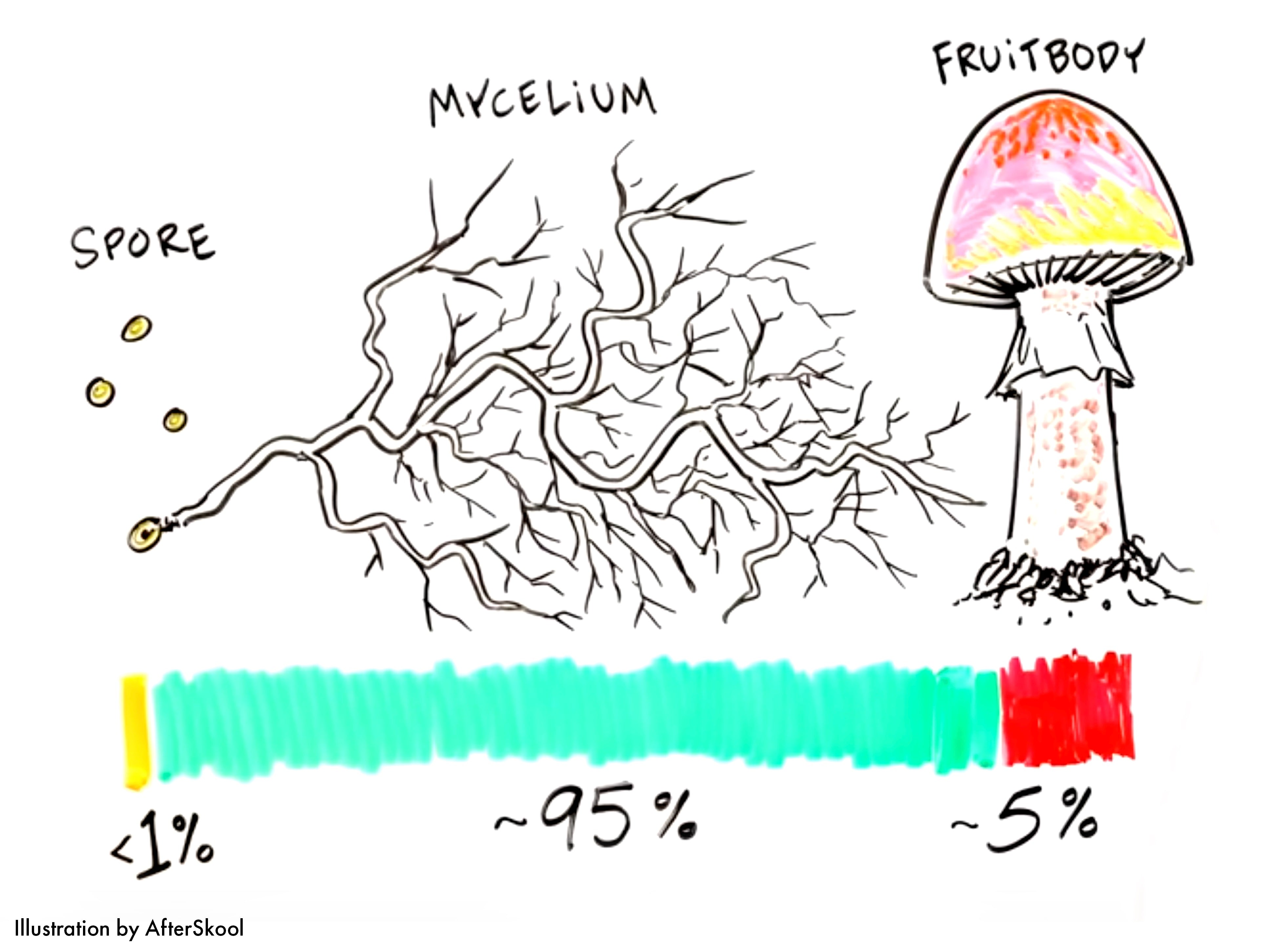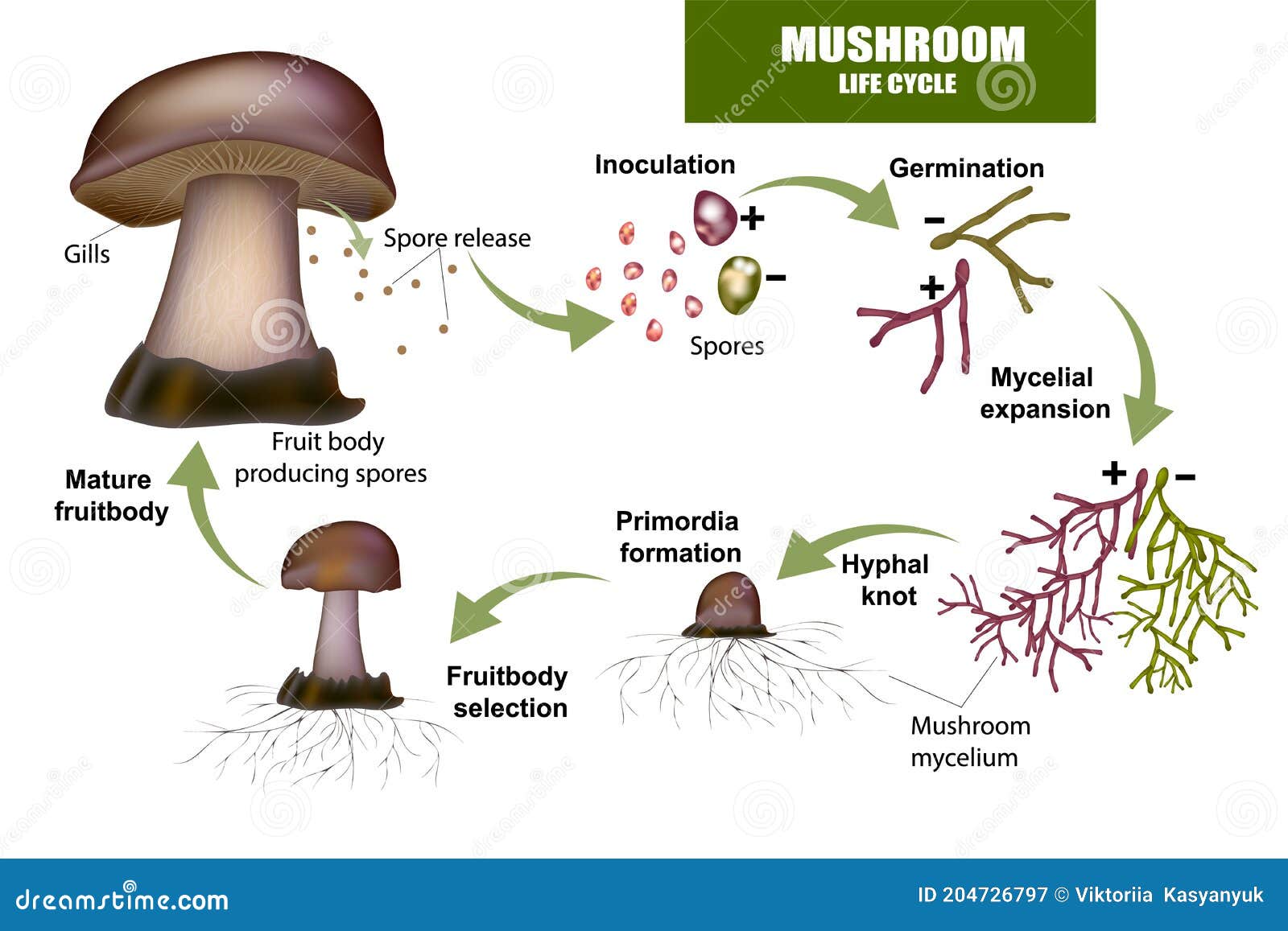What happens to mycelium after fruiting?

Thermogenesis happens when the mycelium is decomposing organic matter. If your fruiting room is running at the optimum temperature, then your substrate could rise above it and cook the Mycelium. This could mean that your mycelium will get cooked and die.
Thereof, why is my mycelium not fruiting?
Mycelium, the underground vegetative growth of a fungus, needs a moist environment to thrive and produce mushrooms. Mushrooms themselves are mainly water, so if you let the mycelium dry out or the humidity level get too low then nothing will happen. You can also ask how do you initiate mushroom fruiting?
What is the difference between a mycelium and a hypha?
The hyphae and the mycelium are parts of fungi anatomy. The hypha is the building block of a fungus. On the other hand, mycelium refers to the collection of hyphae in a fungus' body. Hyphae are often described as strands, threads, or filaments because of their appearance. How long does it take the fruiting body of the fungus to grow? Some fast-growing mushrooms, like oyster mushrooms, can fully colonize their substrate and be producing fruiting bodies in as little as three or four weeks. Many varieties, like shiitake mushrooms, can take six to 12 months after inoculation before they start to fruit.
Is a mushroom unicellular or multicellular?
Fungi Structure: Fungi can be made up of a single cell as in the case of yeasts, or multiple cells, as in the case of mushrooms. The bodies of multicellular fungi are made of cells that band together in rows that resemble the branches of trees. Each individual branched structure is called a hypha (plural: hyphae). How many types of fruiting bodies are found in fungi? The shape, size, consistency, and color of fruiting bodies vary widely and are considered as morphological characteristics in the taxonomy of fungi. The following three types of fruiting bodies are distinguished in Ascomycetes: the cleistothecium, the perithecium, and the apothecium.






Similar articles
- Why is my mycelium not fruiting?
- Do fungal fruiting bodies have different structural forms?
Sometimes, the body of fungi can be overlooked until it becomes a fruiting body. Depending on the environment, some fungi can take on different forms.
- What is mushroom fruiting body?
Spores are found in fruiting bodies of fungi and can be dispersed to reproduce. A familiar example of a fruiting organism is the mushroom. They are made from hyphae which are the tiny threads that make most fungi bulky. A mycelium is a network of hyphae that runs through the soil in all directions. Ram.
- Does chaga have a fruiting body?
- What is a fruiting body and what is its function?
- What is the fruiting body of a mushroom called?
- What are fruiting bodies Class 11?
 Drugs Forum
Drugs Forum
